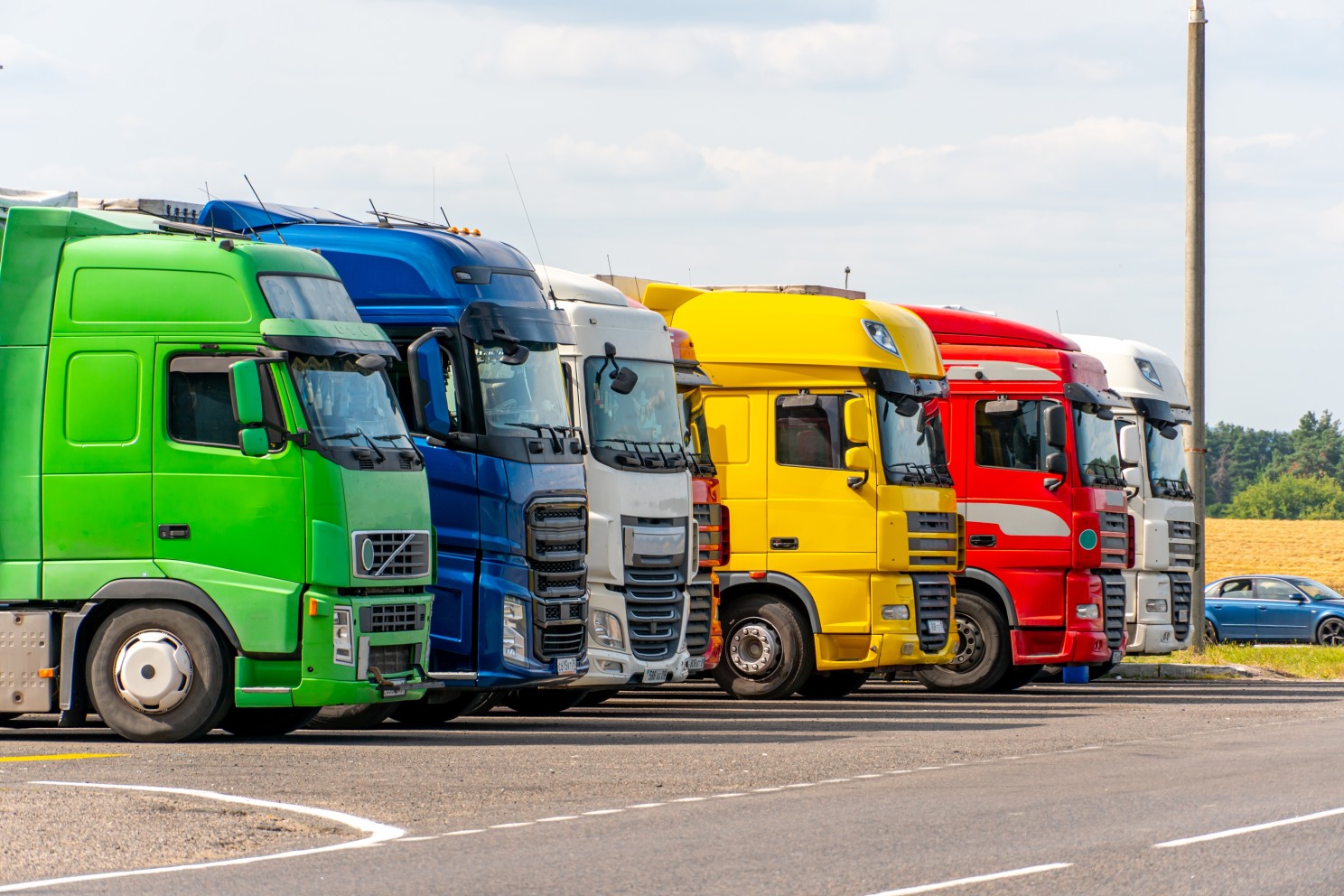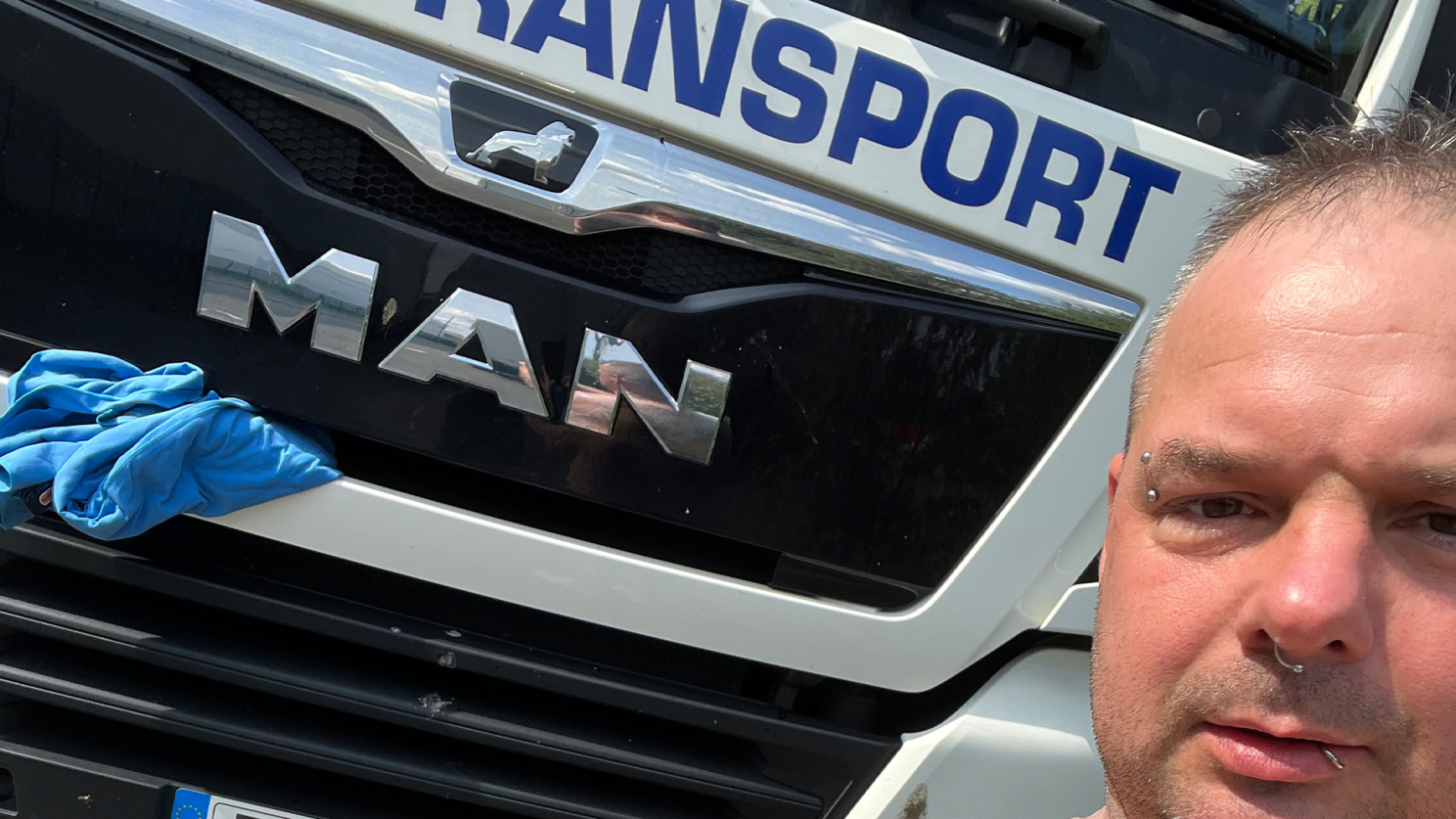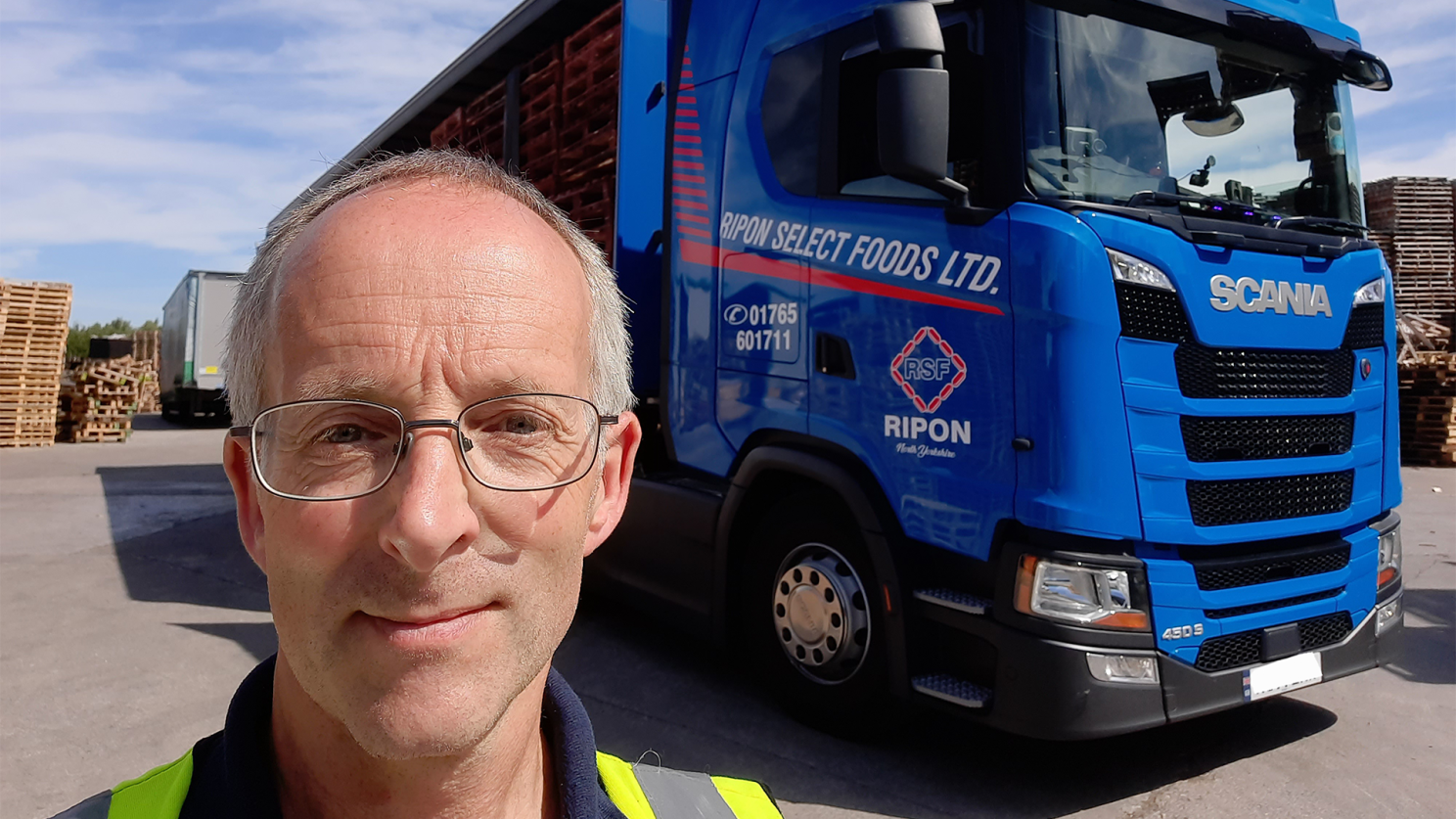
Susie Jones
Histoires de camionneurs : récits de la grande route
Créée: 22/08/2024
•
Mise à jour : 22/08/2024
Nous voulons mettre en lumière la communauté des transporteurs routiers et apprendre à connaître les personnes qui se trouvent derrière le volant.
Des hélicoptères qui atterrissent devant leurs camions aux voitures qui roulent du mauvais côté de l'autoroute, apprenez-en plus sur les chauffeurs qui livrent vos marchandises.
Alan
Alan conduit depuis 23 ans et a décidé de rejoindre l'industrie après avoir écouté les chansons d'Ally Thomson sur la conduite des camions. Lorsqu'on lui demande ce qu'il aime le plus dans son travail, il répond que c'est "la solitude qu'apporte la conduite d'un camion - il y a une séparation totale avec la vie de famille".
Les camions Volvo sont ses préférés, car il parcourt le Royaume-Uni pour transporter les marchandises d'Amazon. Il dit avoir transporté beaucoup de produits intéressants, "le choix est illimité - il suffit de penser à tout ce que vend Amazon".
Pour les conducteurs qui stationnent la nuit, il est difficile de se divertir pendant les temps morts. Cependant, des conducteurs expérimentés comme Alan ont mis au point leur routine du soir. Il déclare qu'il "aime regarder Sky TV sur l'iPad" lorsqu'il est garé pour la nuit.

Pour les conducteurs qui ont du mal à se divertir au volant, nous avons rassemblé une liste de moyens pour [empêcher l'ennui] (https://www.linkedin.com/pulse/you-bored-road-snap-account%3FtrackingId=WdH0FfVaRlqIItFQ9kHa5A%253D%253D/?trackingId=WdH0FfVaRlqIItFQ9kHa5A%3D%3D) de se manifester.
Si les longues heures passées sur la route peuvent sembler monotones à beaucoup, Alan explique qu'il y a toujours quelque chose qui le tient en haleine.
"Je crois que la chose la plus folle que j'ai vue en conduisant, c'est un hélicoptère qui atterrit juste devant moi", explique-t-il, bien loin de la réputation monotone qui a entouré le secteur pendant des décennies.
Fort de ses 23 ans d'expérience dans le secteur, Alan propose quelques conseils qui vous permettront de garder vos dents fraîches lors de vos voyages.
Il explique que "le conseil que je donnerais à toute personne débutant dans le secteur est de toujours penser à charger sa brosse à dents".
Richard
Il y a 36 ans, Richard a commencé sa carrière dans le secteur du transport routier et n'a jamais regardé en arrière. Il a attrapé le virus de la conduite lorsqu'il a rejoint ses deux frères aînés pour aider à livrer des marchandises à travers le Royaume-Uni.
"J'adore prendre un chargement et partir. Je décide quand je fais une pause et où je me gare. C'est génial d'être sur la route et de voyager dans tout le Royaume-Uni", explique-t-il.
Au cours de sa carrière, la vie sur la route l'a conduit jusqu'à Milan, en Italie - un voyage éprouvant même pour les conducteurs les plus expérimentés. Lorsqu'on lui demande comment il se divertit pendant ses voyages, il répond : "J'aime écouter de la musique et regarder des films pendant mon temps libre."

Le meilleur camion pour cela ? "Un Scania Next Generation 450S", répond-il.
Pour Richard, 30 ans dans le secteur ne sont pas allés sans leur lot d'histoires folles et de livraisons inhabituelles : "J'ai vu une voiture rouler à contresens sur une autoroute, en sortant d'une bretelle d'accès. La chose la plus intéressante que j'ai eue à l'arrière du camion, c'est un char de parade de la Saint-Wilfred".
Bien qu'il aime toujours la route, Richard affirme qu'il y a parfois un prix à payer. Il donne un aperçu de la réalité de cette profession et des conseils à ceux qui souhaitent la rejoindre.
"Réfléchissez bien si c'est la carrière qui vous convient. Attendez-vous à de longues heures de travail et à manquer de vie de famille.
Sean
Ayant grandi dans une famille de chauffeurs, Sean avait le camion dans le sang. Il y a 20 ans, il s'est mis au volant et a poursuivi sa carrière dans le secteur du transport routier.
Ce travail comporte de nombreux avantages, mais pour Sean, la liberté qu'il offre est ce qu'il aime le plus. Cette liberté l'a conduit jusqu'en Écosse pour un service de six semaines. Pendant ces longs trajets, il se distrait en téléphonant à ses amis et en regardant la télévision.

En outre, les relais routiers ont joué un rôle essentiel pour Sean dans la lutte contre l'isolement qu'entraîne la conduite. Souvent très animés, les relais routiers permettent à Sean de retrouver ses amis lors de ses déplacements.
Ces arrêts au stand sont l'occasion idéale d'entendre les histoires abracadabrantesques d'autres camionneurs. Comme Richard, la chose la plus étrange que Sean ait vue au cours de ses voyages a été "une voiture roulant à contresens sur une autoroute dans l'obscurité" - une histoire bien trop répandue dans la communauté des routiers.
Sean a choisi un DAF XF 530 pour transporter des matériaux de construction à travers le Royaume-Uni. Il conseille à tous ceux qui souhaitent faire carrière dans le transport routier de "foncer".
Dave
Dave conduit des camions depuis 30 ans et a voyagé jusqu'au Danemark et en Espagne. Lorsqu'il ne voyage pas dans son camion préféré, un Volvo FH, il aime regarder des feuilletons dans le confort de sa cabine.
"Le comportement de certains automobilistes m'a donné quelques histoires folles à raconter", explique-t-il. Cependant, lorsque nous avons demandé à Dave quelle était la chose la plus intéressante qu'il ait eue à l'arrière de son camion, il n'a rien dit - "c'est top secret", a-t-il déclaré.
Après 30 ans de transport de marchandises, Dave a appris plusieurs choses sur le monde du transport. Il donne un bon conseil à ceux qui cherchent à démarrer leur carrière dans le secteur : "assurez-vous de vous spécialiser dans quelque chose".
Alastair
Relativement nouveau dans le secteur, Alastair a décidé de poursuivre une carrière de chauffeur de camion pour se tenir occupé après sa retraite. Avec cinq ans à son actif, il apprécie par-dessus tout la variété de la profession.
Pendant cette période, Alastair a pu voyager à travers le Royaume-Uni et l'Europe : "Je suis allé à Inverness, à Copenhague, à Lisbonne, à Budapest et à Rome", déclare-t-il.
Pour éviter de s'ennuyer, Alastair aime écouter "Radio 4, LBC et 5 Live".
En voyageant à travers l'Europe, il a été témoin de son lot de comportements inhabituels de la part des autres usagers de la route. Mais c'est plus près de chez lui qu'il a dû manœuvrer son camion à travers "les manifestations à Londres. C'est probablement la chose la plus folle que j'ai vécue", explique-t-il.
Pour les fans de 007, Alastair raconte la fois où il a dû transporter des objets top secrets.
"L'objet le plus intéressant que j'ai transporté à l'arrière du camion est probablement le matériel d'exposition de James Bond", déclare-t-il.
Bien qu'Alastair ne soit pas dans ce secteur depuis longtemps, il a quelques mots pour ceux qui débutent dans le secteur.
"Le conseil que je donnerais à quelqu'un qui envisage de rejoindre le monde du transport est de rester calme".
Sean V
L'amour de Sean pour la route remonte aux nombreuses vacances d'été passées avec son père à bord de son camion. Après 30 ans de conduite, son amour de la route continue de grandir.
"Ce que j'aime dans ce travail, c'est de voir tous les beaux endroits du Royaume-Uni et de l'Europe", explique-t-il. C'est un travail qui l'a conduit vers de nombreuses destinations, Rome étant la plus lointaine.
Lorsqu'il n'explore pas les villes, Sean aime se divertir en regardant la télévision, en utilisant son iPad et, jusqu'à récemment, en jouant dans le confort de son propre taxi.

La chose la plus folle dont il a été témoin sur la route ?
Malheureusement, Sean est également témoin d'un spectacle trop courant chez les chauffeurs de camion : "une voiture roulant à contresens sur l'autoroute", explique-t-il.
Au cours de ses 30 années de carrière, Sean déclare que les camions DAF sont ceux qu'il préfère conduire, et que l'objet le plus intéressant qu'il a transporté était "du matériel médical spécialisé".
L'amour de Sean pour le secteur l'emporte sur certains aspects négatifs du travail. Cependant, pour ceux qui cherchent à démarrer leur carrière dans le secteur du transport routier, il a ces sages paroles à leur offrir :
"Si vous envisagez de rejoindre l'industrie, attendez-vous à faire de longues heures.
S'inscrire à SNAP aujourd'hui
SNAP vous facilite la vie en vous connectant à notre vaste réseau de services de transport routier. [Inscrivez-vous dès aujourd'hui] (https://snapacc.com/sign-up/)



